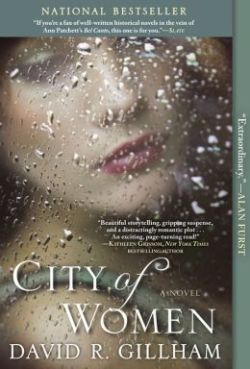
OK. This book looked promising to me at first. Part historical fiction, part thriller/romance/fantasy, it seemed the perfect Next Read. But for me it devolved into full-on hate read.
Set in 1980s London, the book centers on Jo Clifford, a “modern, independent career woman”. She is a journalist, and in the course of researching a story on past life regression, she is hypnotized and begins to have visions of life in the 12th century. it turns out that Jo is the reincarnation of Matilda de Braose, wife of William de Braose, actual historical bully, and one of King John’s closest friends.
As she goes deeper and deeper into the investigation, Jo starts to regress automatically. She has no control over when or for how long these sessions last. She gets more and more involved with Matilda’s life, believing that YES, she is Matilda.
This part was interesting. Although a lot of the real Matilda’s life is murky, it’s obvious that the author did her research here. De Braose was a noble with lands in Wales, and was responsible for some pretty gruesome attacks on the local population. He was raised up quickly, and when he angered John (a petulant SOB if there ever was one), he lost everything. While de Braose fled to France, his wife Matilda and oldest son were captured and starved to death at Corfe castle in 1210.
Again, I enjoyed the parts of the book that dealt with Matilda. But Jo was a bore, and my heart sank every time the book switched back from Matilda’s story. Seriously. Jo is supposedly a “strong” woman. How do we know? Because we keep being told this. There’s clearly no evidence of it in over 600 pages, as she really has no personality. Ugh. (I’ve never read Barbara Erskine before, so I can’t say anything about her other work, but I’m not likely to try her again.)
I generally don’t like straight romance novels but I like good writing, so I gave this book a chance. Is this a Romance novel? I don’t know. The “romance” itself was pretty sickening. The men in her life are the Worst. SPOILER! Everyone Jo knows was also regressed. They knew her in the past, all want her now, and at various times they: let themselves into her apartment/hypnotize her against her will/RAPE!/BEAT!/or just creepily take advantage of her. But at no time does this nitwit consider calling the cops or even changing her freaking locks. CHANGE YOUR LOCKS!
She just keeps going back for more. And on. For 600-plus pages. I’d say that this is the author’s commentary on the mindset of an abused woman, but I think that would be giving her too much credit. I honestly believe that Erskine thinks this shit is romantic.
Lady of Hay could also have used an editor – at over 600 pages, I can’t tell you how much time is wasted describing about Jo’s latest linen shift dress or how often she shared dinner and a bottle of wine with Nick despite the fact that he’d tried to strangle her the night before. the story could easily have been told in half the pages. At one point, about 500 pages in, new characters are introduced out of the blue and become important for a hot minute. I liked them, but kept waiting for them to have a purpose. I frankly would have preferred the book to be about them.
Why did I keep reading? Because I’m not a quitter, that’s why. But seriously – if you want to read a good book about the Plantagenets or Wales in the 12th Century then read Sharon Kay Penman. Spare yourself this dreck.
Read more reviews at misskatesays: http://misskatesays.com/2014/01/04/miss-kates-cbrv-review-8-lady-of-hay-by-barbara-erskine/







 I accidentally left
I accidentally left 